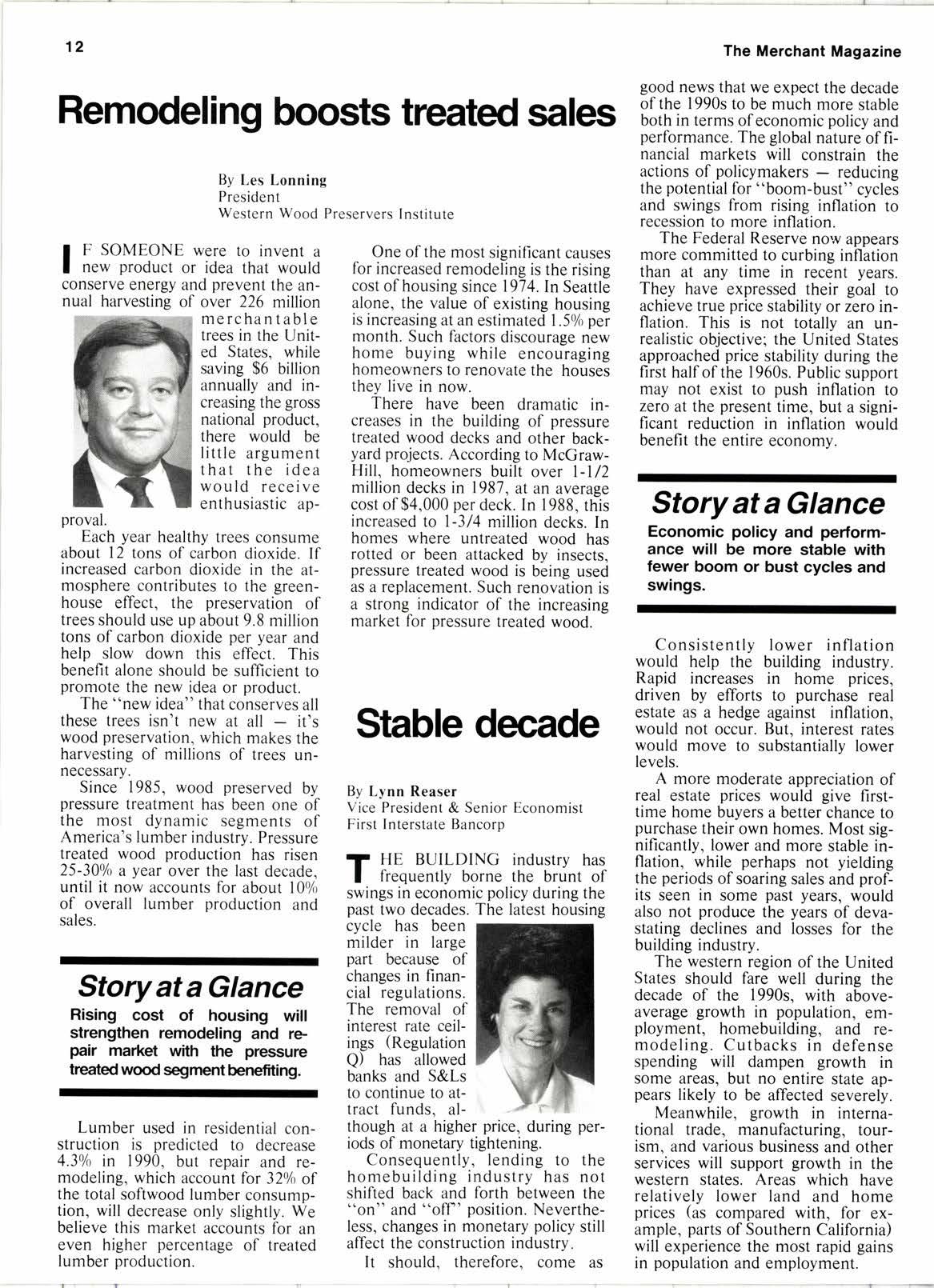
2 minute read
Stable decade
By Lynn Reaser Vice President & Senior Economist First Interstate Bancorp
.FHE BUILDING industry has
I frequently borne the brunt of swings in economic policy during the past two decades. The latest housing cycle has been milder in large part because of changes in financial regulations. The removal of interest rate ceilings (Regulation Q) has allowed banks and S&Ls to continue to attract funds, al- though at a higher price, during periods of monetary tightening.
Consequently, lending to the homebuilding industry has not shifted back and forth between the "on" and "off' position. Nevertheless, changes in monetary policy still affect the construction industry. It should, therefore, come as good news that we expect the decade of the 1990s to be much more stable both in terms of economic policy and performance. The global nature of financial markets will constrain the actions of policymakers - reducing the potential for "boom-bust" cycles and swings from rising inflation to recession to more inflation.
The Federal Reserve now appears more committed to curbing inflation than at any time in recent years. They have expressed their goal to achieve true price stability or zero inflation. This is not totally an unrealistic objective; the United States approached price stability during the first halfofthe 1960s. Public support may not exist to push inflation to zerc at the present time, but a significant reduction in inflation would benefit the entire economy.
Story at a Glance
Economic policy and performance will be more stable with fewer boom or bust cycles and swings.
Consistently lower inflation would help the building industry. Rapid increases in home prices, driven by efforts to purchase real estate as a hedge against inflation, would not occur. But, interest rates would move to substantially lower levels.
A more moderate appreciation of real estate prices would give firsttime home buyers a better chance to purchase their own homes. Most significantly, lower and more stable inflation, while perhaps not yielding the periods ofsoaring sales and profits seen in some past years, would also not produce the years of devastating declines and losses for the building industry.
The western region of the United States should fare well during the decade of the 1990s, with aboveaverage growth in population, employment, homebuilding, and remodeling. Cutbacks in defense spending will dampen growth in some areas, but no entire state appears likely to be affected severely.
Meanwhile, growth in international trade, manufacturing, tourism, and various business and other services will support growth in the western states. Areas which have relatively lower land and home prices (as compared with, for example, parts of Southern California) will experience the most rapid gains in population and employment.
Political as opposed to economic factors may be the primary limitation on building activity in various locations. These will involve environmental concerns and efforts by local residents to prevent increasing congestion. In addition. increasing competition among home centers may blace. additional pressure on profit marglns.
On balance, however, the decade of the 1990s should be a more stable period for the homebuilding and related industries. The western part of the United States should provide significant opportunities for growth.










